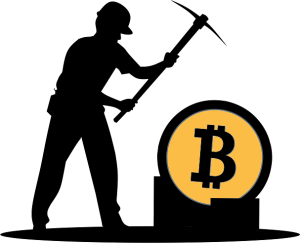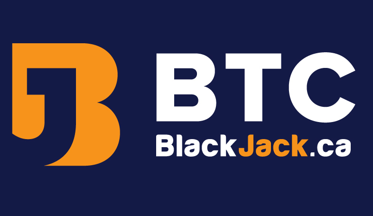A Complete Beginners Guide to Mining Crypto Currency in Canada

If you’re reading this, you’ve surely heard that it’s possible to “mine” your own free Bitcoins, from the comfort of your very own home, right here in Canada. It’s true. Bitcoin mining is a real thing. But it’s not like any mining you’ve ever known before. You don’t need a pick axe or a shovel, or one of those funny headlamp hardhats to do it.
Bitcoin is a crypto currency; a digital token that requires digital mining. All you need is a really good computer system. Wen I say really good, I mean it. It must be specifically equipped for the coins you wish to mine. But don’t get your heart set on Bitcoin just yet.
Warning: Bitcoins are nearly impossible to mine on your own! Altcoins are not.
Before we get too far into this, let me state very clearly that Bitcoin [BTC] is almost impossible to mine on your own these days. Ten years ago, it was a breeze. Today, there are so many people trying to mine Bitcoin, you have to be part of a sophisticated mining pool, like the famous Whinstone or Bitdeer pools, to have any chance of success.
What is a Bitcoin Mining Pool?
A mining pool consists of a lot of people, all using stealthily equipped computer systems. They pool their software resources in hopes of being the first group to mine whatever Bitcoin is currently in transit. Remember, it takes about 10 minutes to mine a single Bitcoin block.
There are countless pools competing to be the first to solve the hash puzzle that will mine that block of coins. So, only one group is going to get the reward. Each member of the pooled group will share an incremental value of the block reward, or some other predetermined payout as reward, based on the percentage their system contributed to the mining.
Yes, mining pools can be successful, but they aren’t get-rich-quick schemes. It takes a lot of pooled systems to be successful, which vastly cuts into individual profits. Plus, it may require a hefty investment to get started in. Which brings us to…
BTC Mining Equipment – Minimum System Requirements
The absolute minimum system requirements recommended to mine for Bitcoin are as follows. Note that most hardware can be substituted with an equivalent.
- Motherboard: Asus B250 Mining Expert
- CPU: Intel Celeron / Ivy Bridge / Pentium
- Graphics Card: AMD Vega Frontier Edition / Nvidia GTX 970
- Power Supply: Corsair HX1200i / EVGA SuperNOVA 1600
- RAM and Storage: 4GB DDR
Bear in mind, these are the absolute minimum. It is strongly suggested that you go above and beyond the minimum system requirements if you’re serious about becoming a successful Bitcoin miner. Sure, you can join a big mining pool with these specs, buy you will only harvest a meager fraction of any reward; likely not enough to cover the cost of mining.
That being said, I think it’s time to answer this very important question…
How Does Bitcoin Mining Work?
Bitcoin mining is the process of recording transactions on a ledger. It’s not some typist entering information into a system. It’s a protocol known as ‘proof of work‘. The work involves solving (a.k.a. hashing) very complicated puzzles – the types of puzzles only a computer can solve in any decent amount of time. It takes a great deal of computer processing and a generous amount of energy (electricity) to complete these puzzles. A strong system with a fast processor, adequate RAM capacity, and advanced graphics card, combined with a souped-up power supply, is required. (See Bitcoin Mining Equipment above).
What are these puzzles, exactly? Well, it’s more like a guessing game than a puzzle. The computer gets to run through an endless series of guesses as to what the proper 60+ character algorithm is for the block, until it finally guesses correctly. Only a computer could make the number of guesses that might be necessary to get it right in any reasonable amount of time, and it takes a whole lot of electrical energy to do it. This represents the work the system is proving it has completed to get the block added to the chain.
How many guesses does a system have to make?
If the mysterious algorithm were exactly 60 characters long (they’re usually more), the possibilities would be calculated as 60 x 60, 36 times; or 60 to the 36th power (60^36). Why 36? Because each character in the algorithm could be a number or letter. There are 10 single-digit numbers (0-9) and 26 letters (A-Z) in the English alphabet (36 in all). So, the answer to the equation would be…
10,314,424,798,490,535,546,000,000,000,000,000,000,000,000,000,000,000,000,000,000,000
Yeah, about that many possible outcomes…
When enough Bitcoin transactions are hashed to complete a Block, it is recorded on the Blockchain, and the miner or mining pool that successfully hashed the block is awarded with Bitcoin, as well as a transaction fee (paid by the sender), in compensation for their service.
Are there other Minable PoW Cryptos?
Of course! Bitcoin isn’t the only minable proof-of-work (PoW) crypto. Most of the early tokens were built for mining in this way. The top five mineable PoW cryptos, sorted by the time it takes to mine them and the coin reward for doing so, include:
| PoW Crypto | Award per Block | Block Time |
| Bitcoin | 6.25 BTC | 10m |
| Ether | 2 ETH | 14s |
| Dogecoin | 10,000 DOGE | 1m 4s |
| Litecoin | 12.5 LTC | 2m 26s |
| Bitcoin Cash | 6.25 BCH | 9m 25s |
Side Note: Why Bitcoin Transactions Can Take 10mins to 10hrs to Process
If you’ve ever wondered why it can take a very long time to transfer Bitcoin these days, there are a couple of reasons. First, there’s the amount of time it takes to mine a single block; 10 minutes for Bitcoin. There are so many Bitcoins being transferred, it can take a very long time to record them all in blocks. And the chain of requests never ends.
Second, those who want their BTC transactions completed quickly are often willing to pay higher fees to get it done. In turn, miners can pick and choose which transactions they want to include in the block they’re mining. Obviously, they will choose the ones with the highest fee (compensation).
Think of it as a waitress choosing to serve the diners who tip the most, before the patrons who tip less. Except that in the case of crypto mining, the waitress gets to see the size of the potential tip before approaching table. There’s also a bunch of other waiters and waitresses competing to serve that table. They want the big tip too. So they’re all trying to serve the same high-tipping tables at the same time. But the tip only goes to the server who did the best job.
Okay, How Do I Mine My Own Bitcoin?
First, you’re going to need that sophisticated computer set-up, complete with ASIC mining processor and an adequate GPU. Even a basic set-up is going to set you back at least $3,500. Expect to pay a lot more for a really good one.
Next, start looking for a mining pool to join. You could go solo, but your success rate will suffer for it. Without an ultra fast system, you may never successfully mine a single block, shelling out big bucks on your electricity bill for nothing.
- Learn more: How to Choose and Join a Mining Pool
Once you’ve joined a pool, you will receive the pool’s Stratum Addresses. You’ll need to enter these into your mining software. See the software’s instructions guide for accurate information on how and where to enter Stratum addresses. Follow any additional instructions to configure your machine to the mining pool’s specifications.
Last, you’ll need to enter the wallet ID for the digital wallet you want your pool rewards to be sent to. Once all of these steps are complete, it’s a matter of sitting back and waiting for your first pool payout to come in. Don’t get too excited. Odds are it won’t be very much. So long as it’s enough to cover the cost of electricity spent in mining, it will have been worth it.
What About Proof of Stake (PoS) Crypto Mining?
You won’t need nearly as much electricity to mine proof of stake (PoS) crypto, but you will need to stake some crypto of your own to be chosen for the job. Basically, you’re putting up collateral (the stake) to get the mining contract. The collateral is your guarantee that you will do the job right. If you do, you get your stake back, plus the reward for mining the block(s). But you really have to pay attention and record all information accurately. Mistakes can and will be costly. If you don’t record the information correctly, you lose a portion or all of your stake as penalty. Plus, you don’t get the reward.
In essence, PoS crypto mining means you’re doing all the work, instead of the computer.
Is There an Easy Way to Mine Crypto Currency?
Yes! But you won’t make as much money doing it. Then again, your odds of making any money at all are much higher, so maybe you’ll make more money doing it. The point is, there are certainly more reliable, profitable ways to mine crypto currency. The key is to choose a crypto that’s easier and faster to mine than Bitcoin.
One of the easiest crypto to mine (and actually make a profit from, without spending an arm and a leg to do it) is Ether. It’s still possible to mine ETH with a CPU/GPU set-up. That means you don’t have to invest in costly ASIC miner software. What you will need is a GPU Miner program, such as the Claymore Dual Ethereum/Ethash Miner. I could spend a few more paragraphs telling you all about it, but you might as well click that link and learn directly from the source. It opens in a new window, so you won’t lose your place here. For the record, we are not affiliated with them in any way. We just know and recommend good software when we see it.
Can All Crypto Be Mined?
No. While the oldest cryptos in existence were and are still mined, most of today’s third-generation crypto are minted. A minted crypto is one in which all of its coins already exist. Ripple [XRP] and Tron [TRX] are all examples of fully minted crypto. They cannot be mined.
It is still possible to earn minted crypto for mining other coins. For example, Claymore’s Dual Miner software allows users to earn TRX, while mining ETH. This is a common practice, rewarding one form of crypto for mining another.
What if I still don’t get it…?
If you’ve read through this entire page, but still don’t understand how Bitcoin and Altcoin mining works, please take a few minutes to read this page, published in TheVerge. It may actually take more than a few minutes to get through. It’s chock-full of useful information, going into far more detail than this one. But I assure you, it’s an amusing and highly educational read. It will be well worth your time if you’re serious about mining for profit.
